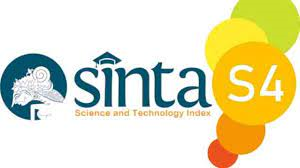The Effectiveness of Using Video Clip in Teaching English Vocabulary at SD Fastabiqul Khairat Samarinda
DOI:
https://doi.org/10.30957/ijoltl.v5i2.623Keywords:
Effective, Video Clip, VocabularyAbstract
This study examines the effectiveness of video clip in teaching vocabulary to elementary school students. The researcher used a quantitative approach Âof one-group pre-test post-test design or single-subject experimental design. This research was conducted at SD Fastabiqul Khairat Samarinda at Utsman Bin Affan class of two grades consist of 25 students. The researcher was collected the data for three meetings, the researcher gave pre-test, treatment, and post-test in every meeting. The data were analyzed by using SPSS version 23 with an analysis of the Paired Sample T-Test to know the significant effect of using video clips in teaching English vocabulary. The result of this study showed that there was a significant effect of using video clips in teaching English vocabulary for three meetings. The significant (2-tailed) score of pre-test and post-test for three meetings was less than 0.05. The researcher concluded that using video clips in teaching English vocabulary to Utsman Bin Affan class was effective.
Downloads
References
Amalia, L. (2017). Teaching Vocabulary Through Movie to Improve Vocabulary Mastery of The First Grade Students At SMPN 26 Bandar Lampung. Department of Language and Arts Education, Universitas Lampung.
Baniabdelrahman, A. A. (2013). The Effect of Using Online Tools on Ninth Grade Jordanian Students’ Vocabulary Learning., 3. Retrieved from https://www.academia.edu/15575753/The_Effect_of_Using_Online_Tools_on_Ninth_Grade_Jordanian_Students_Vocabulary_Learning
Brown, D. (2000). The Principles of Learning and Teaching. New Jersey : Prentice hall (Fourth Edition). San Francisco: Addison Wesley Longman, Inc.
Brown, H. D. (2007). Principles of Language learning and Teaching (Fifth Edition). San Francisco: Pearson Education, Inc All.
Cakir, D. I. (2006). The Use of Video as An Audio-Visual Material in Foreign Language Teaching Classroom. The Turkish Online Journal of Educational Technology, 5(4).
Gallacher, L. (2003). Video and Young Learner. Retrieved on February 13, 2019, from https://www.teachingenglish.org.uk/article/video-young-learners-1
Gass, S. M., & Selinker, L. (2008). Second Language Acquisition (Third Edition). New York: Routledge.
Gay, L. R., Mills, G. E., & Airasian, P. (2006). Educational Research Competencies for Analysis and Applications. (Eight Edition). New Jersey: Pearson.
Gitamarsita, S. R. (2012). The Effectiveness of Teaching Vocabulary by Using Video Dora The Explorer of The Fifth Grade Students At SD N 2 Sucen Jurutengah in The Academic Year 2011/2012. English Department, Universitas Muhammadiyah Purworejo.
Gogoi, G. (2015). Vocabulary: Active and Passive Vocabulary: Various Techniques of Teaching Vocabulary. Retrieved on September 13, 2019, from http://www.the-criterion.com/vocabulary-active-and-%0Apassive-vocabulary-various-techniques-of-teaching-vocabulary.%0A
Hanson, S., & Padua, J. F. M. (2011). Teaching Vocabulary Explicitly. Honolulu: Pasific Resources for Education and Learning.
Harmer, J. (1998). How to Teach English. London: Addison Wesley Longman.
Harmer, J. (2001). The Practice of English Language Teaching (Third Edition). London: Addison Wesley Longman.
Hidayat, I. W. (2017). The Techniques for Teaching Vocabulary at SMP Muhammadiyah 10 Surakarta in 2016-2017 academic year. Department of English Education, Universitas Muhammadiyah Surakarta.
Downloads
Published
How to Cite
Issue
Section
License
Authors who publish with this journal agree to the following terms:
- Authors retain copyright and grant the journal right of first publication with the work simultaneously licensed under a Creative Commons Attribution-ShareAlike 4.0 International License that allows others to share the work with an acknowledgement of the work's authorship and initial publication in this journal.
- Authors are able to enter into separate, additional contractual arrangements for the non-exclusive distribution of the journal's published version of the work (e.g., post it to an institutional repository or publish it in a book), with an acknowledgement of its initial publication in this journal.
- Authors are permitted and encouraged to post their work online (e.g., in institutional repositories or on their website) prior to and during the submission process, as it can lead to productive exchanges, as well as earlier and greater citation of published work (See The Effect of Open Access).












